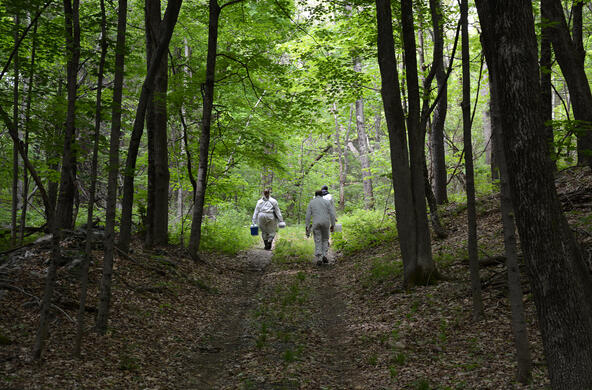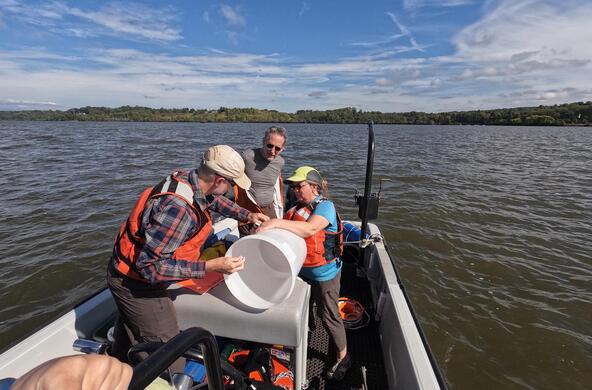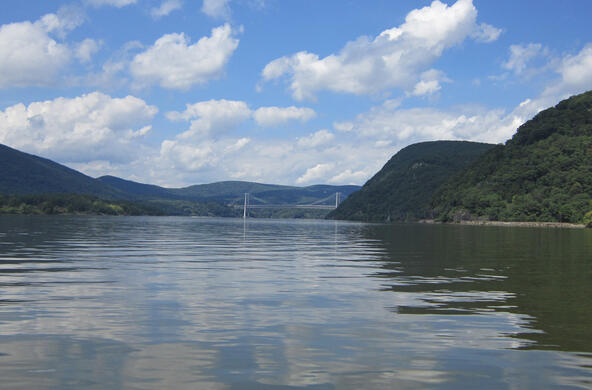Ecologists embrace long-term studies of nature. The 60-year record of rising carbon dioxide in Earth’s atmosphere underlies all our current concerns about global climate change. Long-term records underpin our recognition of the ozone hole, acid rain, species decline and mercury contamination. The long-term health and water quality of the Hudson River is recorded in a recent publication by David Strayer and his colleagues fro.m the Cary Institute.
Scientific studies of the Hudson River like Strayer’s include measurements of its dissolved oxygen content, nitrate concentrations, and phytoplankton productivity. This is esoteric stuff to the casual reader, but the data will provide an indelible record of the condition of the Hudson at the turn of this century.
Working in the early 1800s, artists of the Hudson River School, including Albert Bierstadt, Thomas Cole, Frederic Church, Asher Durand, and Jacob Caleb Ward left behind an invaluable record of paintings of the Hudson River and its Valley, in which we can see land-use patterns, forest cover, and agricultural activities. They are not quantitative, but these paintings show how humans perceived and used their environment more than 150 years ago.
The colors of some art works are well correlated to measurements made today with sophisticated instruments. Zerefos and his colleagues have used the red-to-green ratio in sunsets painted by “the great masters” to infer what we now know and measure as Aerosol Optical Depth (AOD), a measure of the number of light-reflective particles in the atmosphere from volcanic eruptions and air pollution.
Changes in AOD are a crucial component of global climate models that attempt to predict changes in global climate as a result of the additions of greenhouse gases to Earth’s atmosphere. Calculated from the paintings, AOD shows an increase from 0.15 in 1850 to 0.20 in the year 2000—a 33% increase in the number of aerosols likely due to industrial emissions. Good models of climate will include such changes to the global atmosphere, because they affect the albedo or reflectivity of the Earth.
Science and art are not worlds apart. Both leave behind a record of environmental condition as it affects the human perception of the environment and a benchmark of what to preserve for the future.
References
Strayer, D.L., J.J. Cole, S.E.G. Findlay, D.T. Fischer, J.A. Gephart, H.M. Malcom, M.L. Pace, and E.J. Rosi-Marshall. 2014. Decadal-scale change in a large-river ecosystem. BioScience 64: 496-510.
Zerefos, C.S., P. Tetsis, A. Kazantzidia, V. Amiridis, S.C. Zerefos, J. Luterbacher, K. Eleftheratos, E. Gerasopoulos, S. Kazadzis, and A. Papayannis. 2014. Further evidence of important environmental information content in red-to-green ratios as depicted in paintings by great masters. Atmospheric Chemistry and Physics 14: 2987-3015.







